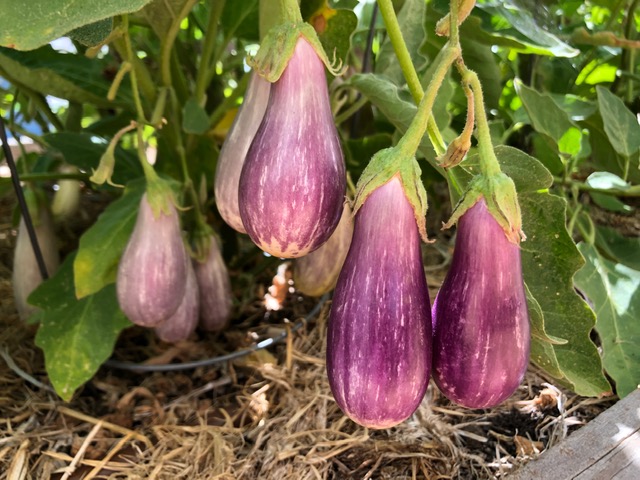

|
|
Keep those summer crops harvested, and they'll continue producing into fall. (Photo: Kathy Morrison)
|
Hot and smoky; those may be favorable qualities for a spicy pepper, but not for the weather.
Unfortunately, orange haze continues to tint our skies as smoke from the Dixie Fire and other blazes accumulates in the Central Valley. Meanwhile, Sacramento area temperatures are again spiking over 105.
According to the National Weather Service, Sacramento will be under a heat advisory now through at least Sunday night. Predicted high for Sunday in Sacramento: 106 degrees. Keeping this oven baking are low temperatures in the 70s, 10 degrees above average for mid-August.
Monday also should see triple digits in the afternoon, but then we’ll finally get some overnight relief. Tuesday’s high is forecast for “only” 92 degrees – normal for this time of summer. For the rest of the week, lows are expected to dip back down to 60 or 61 degrees, helping to keep daytime highs in check. The weather service forecasts low to mid 90s Tuesday into next weekend.
So, take it easy this weekend. Don’t stress in this heat and bad air. Instead, wait until temperatures cool down a little before tackling major chores, fertilizing or planting. That cool-down will be here soon.
* Harvest tomatoes, beans, squash, pepper and eggplants to prompt plants to keep producing.
* Give your veggies a deep watering twice a week, more if planted in containers.
* After watering, give tomatoes, peppers and other non-leafy veggies a boost with phosphate-rich fertilizer to help set fruit. Feed every other week.
* Watch out for caterpillars and hornworms in the vegetable garden. They can strip a plant bare in one day. Pick them off plants by hand in early morning or late afternoon.
* Mulch can be your garden's best friend; it conserves moisture while blocking out weeds. But don't let mulch mound around stalks, stems or trunks. That can promote rot.
* Camellia leaves looking a little yellow? Feed them some chelated iron. That goes for azaleas and gardenias, too.
*Feed citrus trees their last round of fertilizer for the year. This will give a boost to the fruit that's now forming.
* Pinch off dead flowers from perennials and annuals to lengthen their summer bloom.
* Dead head roses.
* Pick up after your fruit trees. Clean up debris and dropped fruit.
* In the garden, direct seed beets, bush beans, carrots, leaf lettuce and turnips.
* Plant potatoes.
* Indoors, start seedlings for fall vegetable planting, including bunching onion, cabbage, broccoli, cauliflower, kale, radicchio and lettuce.
Comments
0 comments have been posted.Sacramento Digs Gardening to your inbox.
Sites We Like
Garden Checklist for week of May 5
Survey your garden after the May 4 rainstorm. Heavy rain and gusty winds can break the neck of large flowers such as roses. Also:
* Keep an eye on new transplants or seedlings; they could take a pounding from the rain.
* Watch out for powdery mildew. Warmth following moist conditions can cause this fungal disease to “bloom,” too. If you see a leaf that looks like it’s dusted with powdered sugar, snip it off.
* After the storm, start setting out tomato transplants, but wait on the peppers and eggplants (they want warmer nights). Pinch off any flowers on new transplants to make them concentrate on establishing roots instead of setting premature fruit.
* Trim dead flowers but not leaves from spring-flowering bulbs such as daffodils and tulips. Those leaves gather energy to create next year's flowers. Also, give the bulbs a fertilizer boost after bloom.
* Pinch chrysanthemums back to 12 inches for fall flowers. Cut old stems to the ground.
* Mulch around plants to conserve moisture and control weeds.
* From seed, plant beans, beets, cantaloupes, carrots, corn, cucumbers, melons, pumpkins, radishes and squash.
* Plant onion sets.
* In the flower garden, plant seeds for asters, cosmos, celosia, marigolds, salvia, sunflowers and zinnias. Transplant petunias, zinnias, geraniums and other summer bloomers.
* Plant perennials and dahlia tubers for summer bloom.
* Don’t wait; plant summer bulbs, such as gladiolus and tuberous begonias.
* Harvest cabbage, lettuce, peas and green onions.